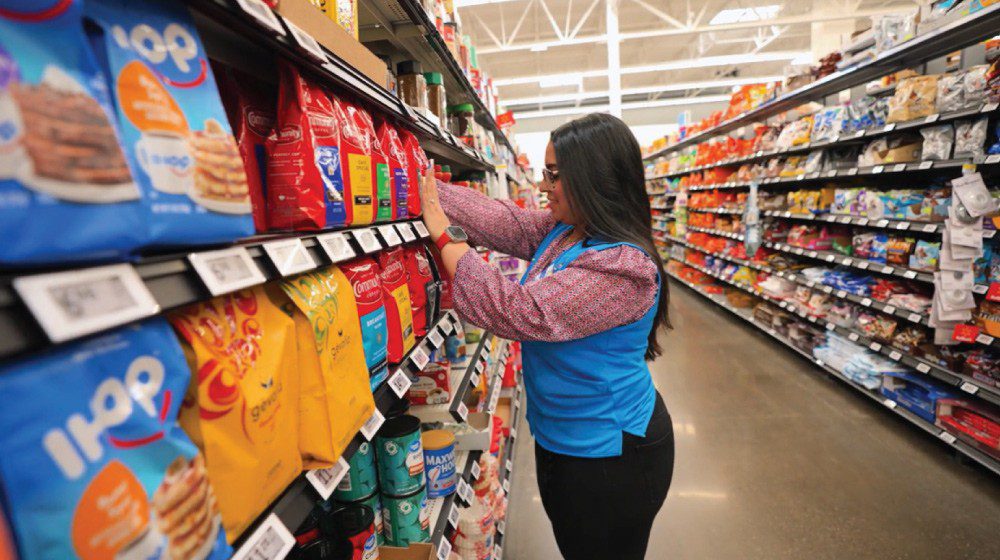Walmart has unveiled a slate of new tech innovations as part of its “Retail Renaissance,” which the company said is aimed at “meeting customer demand with adaptive retail, innovations that intuitively fit into customers’ lives as they seamlessly move across platforms and places.” The new tech includes the rollout of digital shelf labels at all 2,300 U.S. stores by 2026, testing of a Gen AI-powered digital shopping assistant and the integration of drone delivery into its app.
“Driven by our commitment to help our customers live better, we’re constantly working to create shopping experiences that are convenient, engaging and personalized,” said Tom Ward, Chief Ecommerce Officer at Walmart U.S. in a statement.
Walmart to Transition to Digital Shelf Labels Chainwide
The average Walmart store has more than 120,000 products on shelves, thousands of which receive pricing updates each week. Now the company plans to streamline that process with the chainwide rollout of digital shelf labels (DSLs) from Vusion Group that will allow the retailer to update shelf prices using a mobile app, thereby reducing the need to change paper tags by hand.
The technology was first tested at Store #266 in Grapevine, Texas, and will now be rolled out to all 2,300 U.S. stores by 2026.
Daniela Boscan, who leads the Food and Consumable Team at the Grapevine store, was among the first to test out the technology and highlighted a few key benefits that she discovered, including increased associate productivity and reduced walking time; simplified stock replenishment, since associates can use the mobile device to flag items that need refilling; and faster order picking and fulfillment,because the mobile device also guides associates to products needed for online orders.
“A price change that used to take an associate two days to update now takes only minutes with the new DSL system,” said Boscan in a blog post. “This efficiency means we can spend more time assisting customers and less time on repetitive tasks.
“The transition to digital shelf labels is a game-changer for Walmart, our customers and our associates,” Boscan added. “It is not only about improving efficiency and customer satisfaction, but also about integrating sustainability into our work, in this case to help reduce operational waste.”
Walmart Tests New Gen AI-Powered Shopping Assistant
Walmart launched a Gen AI-powered search experience on Walmart.com and in its app earlier this year, allowing customers to browse based on specific use cases and generating more relevant, as well as more cross-category, results. Since that time, Walmart has added more Gen AI-powered online shopping features, including product reviews, product summarizations and product comparisons.
Now, the retailer is beta testing a Gen AI-powered shopping assistant that will engage customers in natural, free-flowing conversations. As customers discover, evaluate and decide on the best product for them, the assistant can guide them to make the best choice for their needs more quickly.
For example, the shopping assistant can respond to customer inquiries such as “What’s the ideal present for a five-year-old?” Over time, the assistant will evolve to include more advanced features and capabilities.
Walmart Brings Drone Delivery to App


Since Walmart began trialing drone delivery in 2021, the service has grown rapidly, with the company having completed more than 30,000 drone deliveries to-date. Earlier this year, Walmart announced a large drone delivery expansion, making the service available to up to 75% of the Dallas Fort-Worth (DFW) population.
For its next act, Walmart is planning to bring the drone delivery ordering experience directly to the Walmart app. Starting later this month, customers in DFW who are eligible for drone delivery based on the address associated with their account will begin to be notified of the new ordering capability through the Walmart app. The integration will be done in phases as more drone delivery sites launch and drone providers receive additional regulatory approvals to fly more goods across greater distances.

